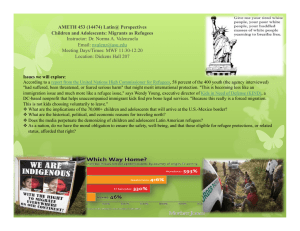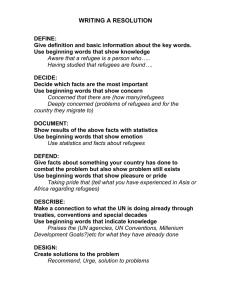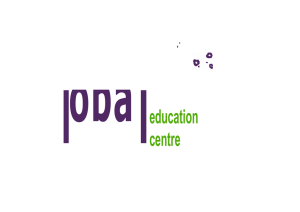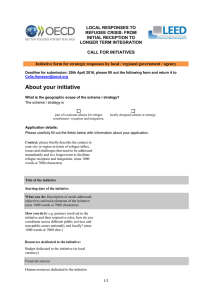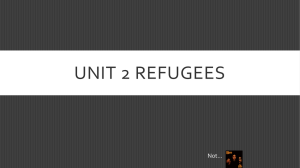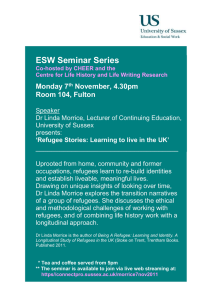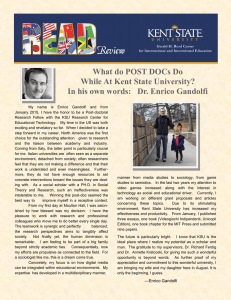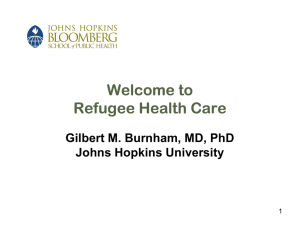Key Refugee Profile in Iraq
advertisement
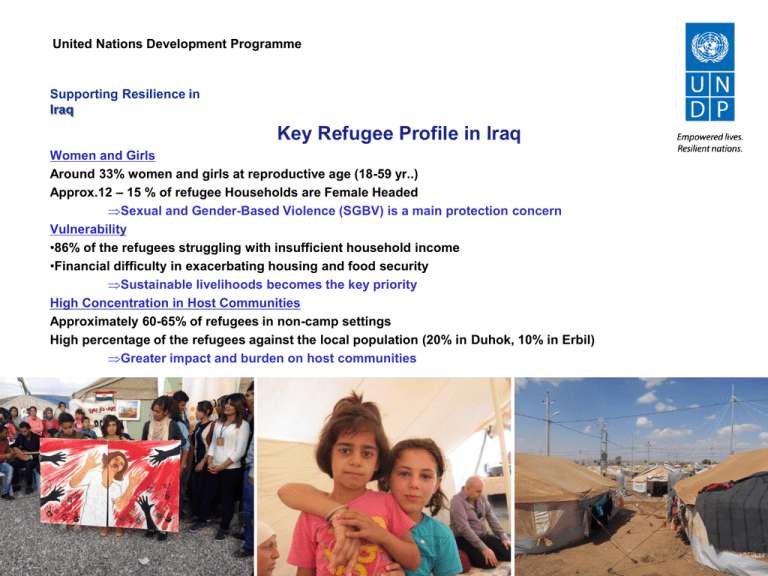
United Nations Development Programme Supporting Resilience in Iraq Key Refugee Profile in Iraq Women and Girls Around 33% women and girls at reproductive age (18-59 yr..) Approx.12 – 15 % of refugee Households are Female Headed Sexual and Gender-Based Violence (SGBV) is a main protection concern Vulnerability •86% of the refugees struggling with insufficient household income •Financial difficulty in exacerbating housing and food security Sustainable livelihoods becomes the key priority High Concentration in Host Communities Approximately 60-65% of refugees in non-camp settings High percentage of the refugees against the local population (20% in Duhok, 10% in Erbil) Greater impact and burden on host communities Empowering a life can build Resilient Nations “Now I feel that I am not alone after receiving legal and social assistance provided by your staff, my problem is now being followed up on by you that make me optimistic to start again my live.” 20 year-old woman, who was forced to marry after arrival at Arbat Refugee camp in Sulaymania, suffered from domestic violence . UNDP-supported legal aid lawyer undertook legal procedures to solve her case, in addition to being provided psychosocial assistance by the project social worker. Challenges and Opportunities Overstretched basic service capacity Socio-economic impacts on host community Need for sustainable protection of girls and women Need for enhanced Government’s response strategies & coordination Challenges Ethnic socialization Opportunities Kurdistan Government’s political will to establish comprehensive response plan and coordination Strong economy Harness socio-economic favorable environment Support Host Gov’t/Communities to support the refugees UNDP Approach to Resilience-based Response in Iraq Coping Direct basic service provision Multi-sector Needs Assessment Basic services/ Local Governance Gov’t led coord. mechanism Recovering Sustaining Gov’t Response Plan Local/Gov’t capacity building Participatory local planning Infrastructure building Vocational training Livelihood/ Economic Empowerment Protection/ Human Rights Temporal income generation (e.g., Cash for work) Youth apprenticeship Job-placement Micro/SME promotion Awarenessraising & Legal education w/ special focus on women & girls Provision of legal assistance Community mobilization for social cohesion Budgetary/financing model Socio-econ data collection/analyses Business networking Skill/knowledge transfer Capacity building of CSOs/Gov’t to scale up legal services for refugees with secured resources

